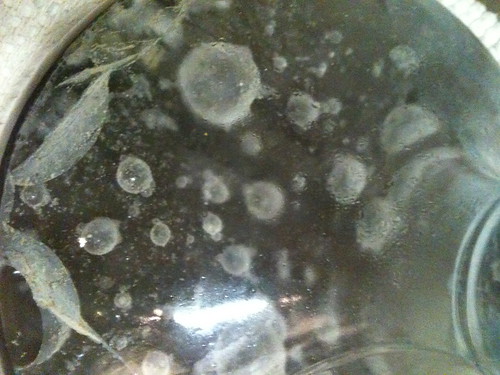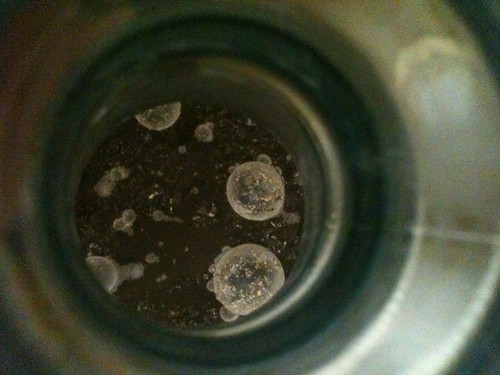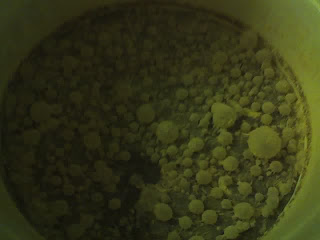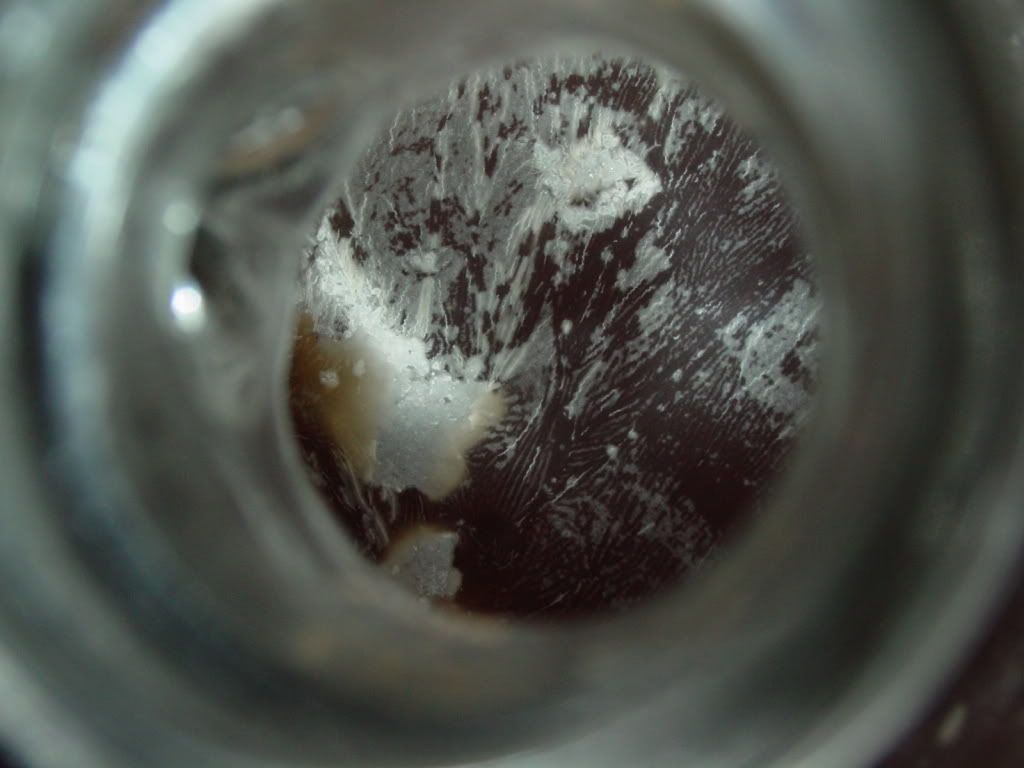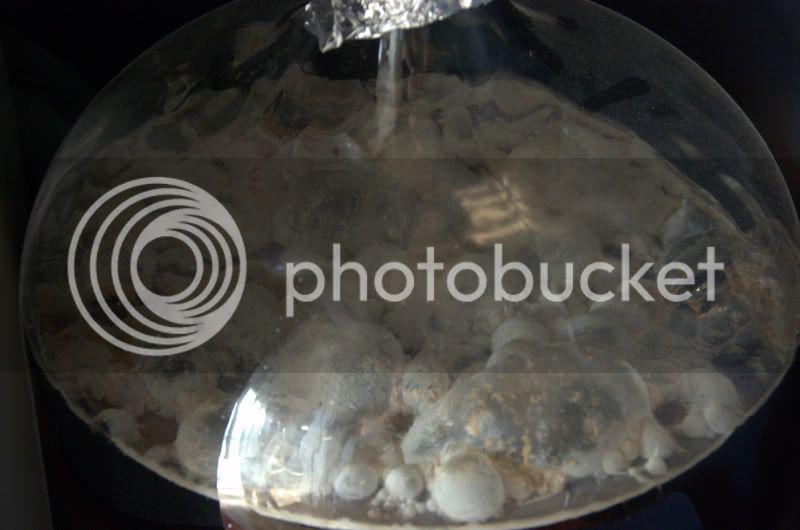On Black Friday, I brewed an old ale with Wyeast 9097 (it has an english ale yeast strain and a Brett strain). Secondaried with oak cubes, and tertiaried for bulk aging. There was nothing for quite some time, but when I checked on it this week, I finally saw the starting of a pellicle! Just thought I'd share it with you guys!





